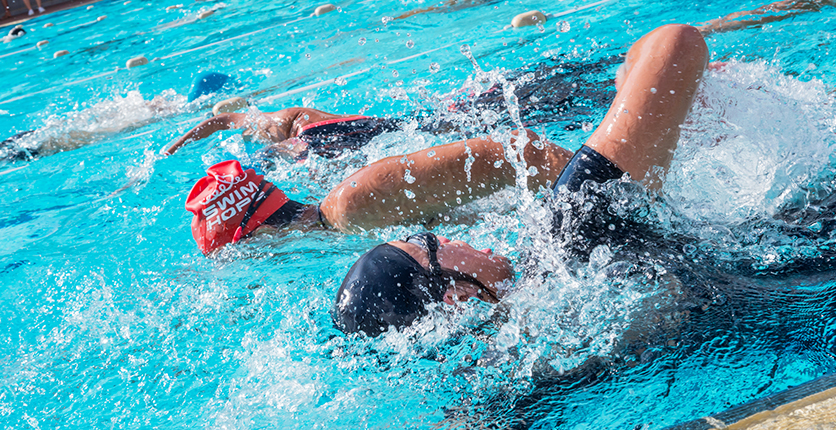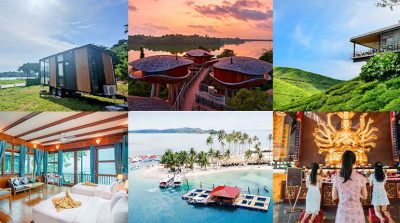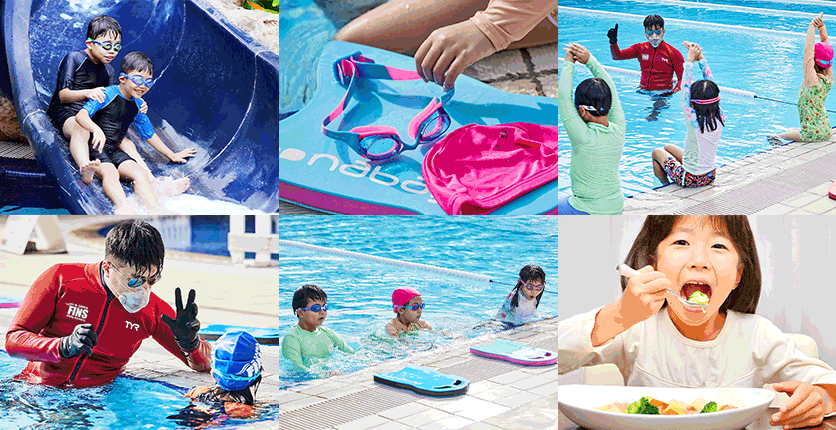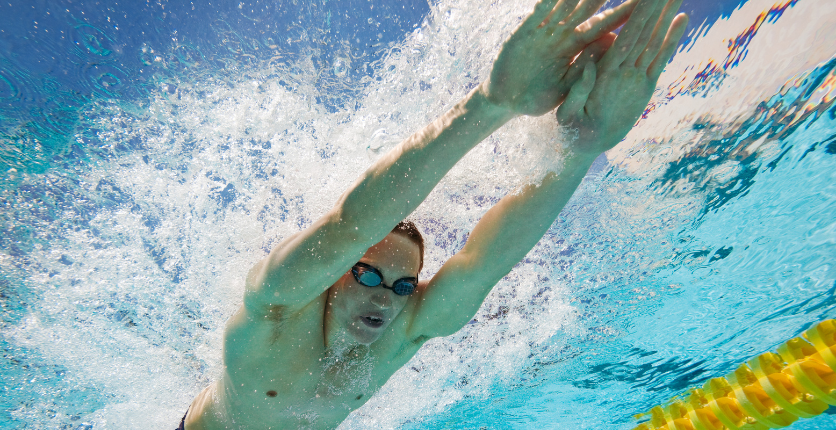Liberty SAFRA Swim For Hope 2021, SAFRA’s iconic annual charity swimming event, is back and going virtual this year!
Since its introduction in 2011 by SAFRA Tampines, the event provides an opportunity for National Servicemen, families and friends to bond through sport and at the same time do their part for charity. Swim For Hope has also since expanded to all five swimming pools at SAFRA Clubs.
Similar to the event in 2020, participants this year get to enjoy a virtual swimming marathon, where they swim at the location of their choice and clock in their distance on the Swim For Hope portal for record-keeping. Registration is open from now till 28 Nov 2021, while the swim period is till 5 Dec 2021, 1200hrs. For more information and to register for the event, go to www.libertysafraswim4hope.com.sg.
Q. What should one keep in mind when preparing for a long distance swim?

A: Arrange a proper training regime and begin training early. This would allow time for the body to gain body strength and cardiovascular endurance, preventing injuries.
Also keep an open mindset to broaden your knowledge for improving your swimming strokes, health and fitness.
Q: How much training does it take to complete a marathon swim in one sitting?
A: From our experience as past athletes and swim coaches, an average swimmer requires 3 months or more to prepare for a single long distance swim session.
Regular swimmers may require 1 month. This may vary as the swimmer’s training preparedness level would need to be aligned with their target and goal.
However, as Liberty SAFRA Swim For Hope 2021 is a virtual event, swimmers are encouraged to train and swim at their own pace.
Q: What kind of exercise regimes do you recommend , as swimmers clock their miles?

A: Swimming long distances requires endurance. Having said that, excessive cardiovascular land training (such as running) may affect the swimmer’s muscular development and density. This development of muscle may make the leg sink and increase drag to the swim.
Start training with progressive distance swimming. Complete 400m in a single swim, increase the distance progressively to 600m, then to 800m until the target distance is met. Upon meeting the target distance, improve on timing by focusing on gliding, and lessening drag.
The training regime can include short distance sprints of 25m. This is to assist in increasing power for limbs to achieve the extra glide. On other days, land based trainings can be implemented. Vertical walking, running or 2.4km jogs are sufficient to increase cardiovascular endurance.
Leg exercises such as squats, lunges and calf raises can be included as they would assist in increasing the body’s lactic acid threshold. Push ups are also a form of exercise to improve upper body strength and power.
Q: What kind of swimwear do you recommend for competitive swimming?
Any non-restrictive swimwear is recommended. A thick rash guard or full wetsuit will not be ideal for swimming long distance as it tires the limbs more quickly, However, thick rash guards or wetsuits can be used for training purposes.
Q: What would be a suitable age for someone to start long distance swimming?

A: To answer the above, we shall follow the age of our “Development” Level swimmers who can be as young as 9 years old. Most importantly, we believe the support of parents and loved ones is encouraging.
Parents can start easing their kids into long distance swimming in Swim For Hope’s new category this year – the 1km Families For Life Parent-and-Child Category which is for 1 parent with 1 child between 6-12 years of age.
Q. Are there any health issues we should be mindful of when it comes to swimming competitively?

A: This depends on individuals. If the swimmer has had a health issue since they were young and it has been managed with their doctor’s medical care and prescriptions, the swimmer should inform the event organisers. It would be ideal if all participants submit their PAR-Q (Physical Activity Readiness. Questionnaire) to ensure they are healthy and ready for the long distance swim.
If the swimmer is not feeling well on the day they plan to swim, we would suggest not doing so for their own safety.
Q. Do you have any other tips to share on long distance swimming?

Aside from the physical training, swimmers should have ample rest and drink plenty of water.
Prior to each cardiovascular training, a high carbohydrate diet would be ideal in order for the body to have sufficient energy. Swimmers may avoid fatty, oily and processed food as this would help sustain a much better endurance physique for the event.
For more information on Swim For Hope and to register for the event, go to www.libertysafraswim4hope.com.sg.
Interested in learning how to swim or to improve your form? Find out more about the programmes at FINS Swim School here.
Featured image: SAFRA








